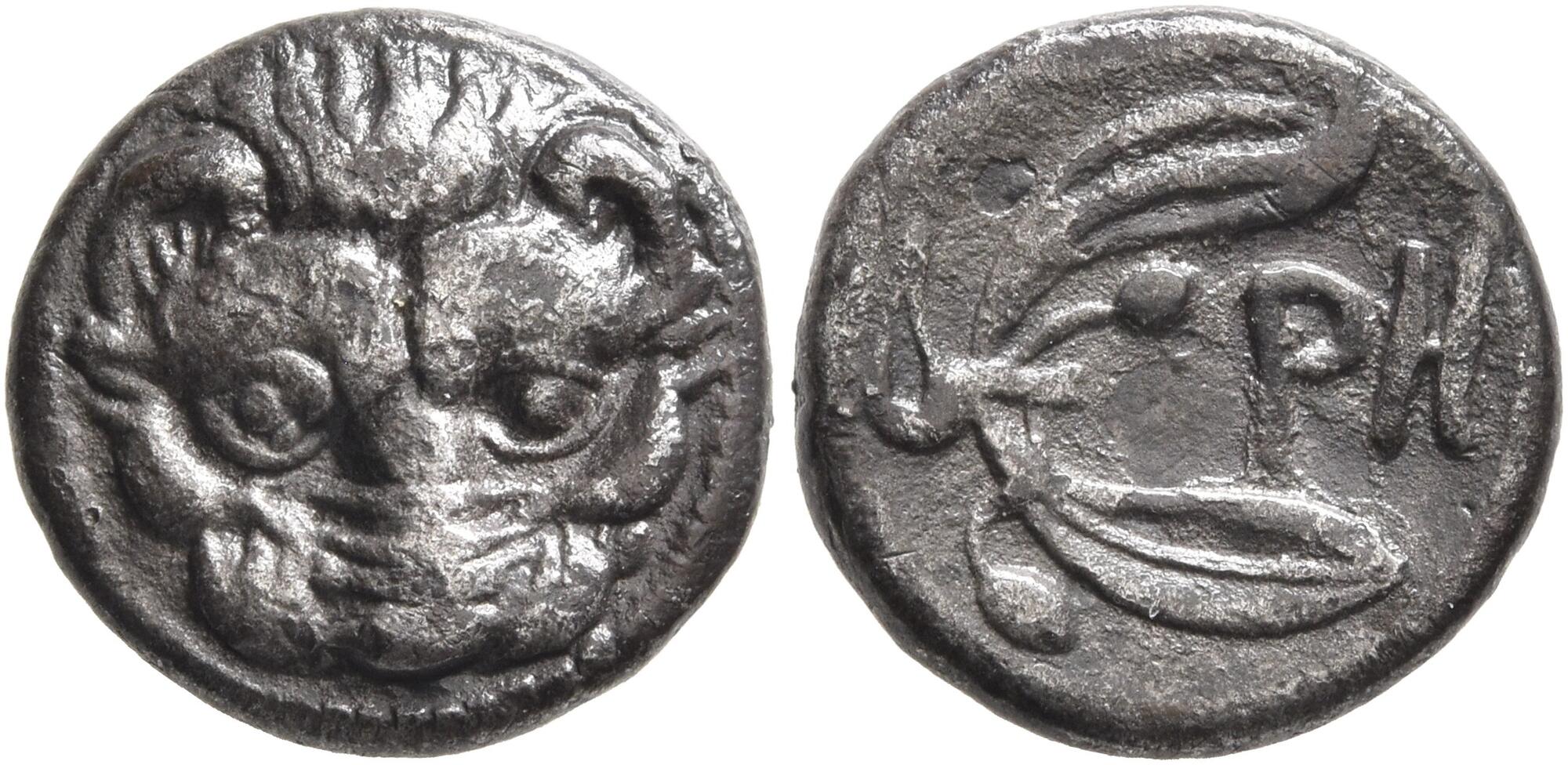410 BCE - 368 BCE | KAMΠΑΝΩΝ
Overstriking coin
Entella_Berlin.jpg
Overstruck variety
Rhegium_hemidrachm.jpg
[1]
Description
| ObverseInscription or printing placed on the obverse.:
|
Horse galloping right, over corn grain.
|
ReverseInscription or printing placed on the reverse.:
|
KAMΠΑΝΩΝ (Greek) Campanian helmet left.
|
Mint and issuing power
| MintIdentifies the place of manufacture or issue of a numismatic object.:
|
Entella
|
Ancient regionAncient region.
|
Sicily
|
Modern countryModern country: Italy
|
AuthorityIdentifies the issuing power. The authority can be "pretended" when the name or the portrait of X is on the coin but he/she was not the issuing power. It can also be "uncertain" when there is no mention of X on the coin but he/she was the issuing power according to the historical sources:
|
|
Chronology
| FromIdentifies the initial date in a range assigned in a numismatic context. 410 BCE toIdentifies the final date in a range assigned in a numismatic context.. 368 BCE
|
Classical 480-323 BC  periodTime period of the numismatic object. periodTime period of the numismatic object.
|
Physical description
MetalThe physical material (usually metal) from which an object is made.: Silver 
|
|
DenominationTerm indicating the value of a numismatic object. Examples: tetradrachm, chalkous, denarius.: hemidrachm 
|
|
|
|
|
References
| Coin referenceReference of the Coin:
|
Garraffo 1984, p. 134, n° b, pl. XVI, n° 17
|
Coin series referenceReference to coin series study:
|
Garraffo 19841Garraffo 1984, p. 134, n° b, pl. XVI, n° 17, HGC 22HGC 2, n° 244
|
| Coin series web referenceCoin series web references:
|
|
Description
| ObverseInscription or printing placed on the obverse.:
|
Facing head of a lion
|
ReverseInscription or printing placed on the reverse.:
|
ΡΗ (Greek) Olive sprig
|
Mint and issuing power
| MintIdentifies the place of manufacture or issue of a numismatic object. ᵖ:
|
Rhegium
|
Ancient regionAncient region. ᵖ
|
Bruttium
|
Modern countryModern country: Italy
|
AuthorityIdentifies the authority in whose name (explicitly or implicitly) a numismatic object was issued. ᵖ:
|
|
Chronology
| FromIdentifies the initial date in a range assigned in a numismatic context. 415 BCE toIdentifies the final date in a range assigned in a numismatic context.. 387 BCE
|
Classical 480-323 BC  periodTime period of the numismatic object. periodTime period of the numismatic object.
|
Physical description
| DenominationTerm indicating the value of a numismatic object. Examples: tetradrachm, chalkous, denarius. ᵖ:
|
hemidrachm 
|
|
|
References
References
- ^ Garraffo, Salvatore (1984), Le riconiazioni in Magna Grecia e in Sicilia. Emissioni argentee dal VI al IV secolo a.C., Catania.
- ^ Hoover, Oliver D. (2012), The Handbook of Greek Coinage Series. 2. Handbook of the Coins of Sicily (Including Lipara). Civic, Royal, Siculo-Punic, and Romano-Sicilian Issues. Sixth to First Centuries BC, Lancaster-London, 489 p.
- ^ Herzfelder, Hubert (1957), Les monnaies d’argent de Rhégion frappées entre 461 et le milieu du IVe siècle av. J.-C., Paris, 1957, 154 p., 20 pl.
- ^ Rutter N. Keith et alii (eds.) (2001), Historia Numorum Italy, London, xvi, 223 p., 43 pl.
- ^ Hoover, Oliver D. (2018), The Handbook of Greek Coinage Series, Volume 1. Handbook of Coins of Italy and Magna Graecia, Sixth to First Centuries BC., Lancaster-London, 2018, lxi, 527 pages, 23 cm


